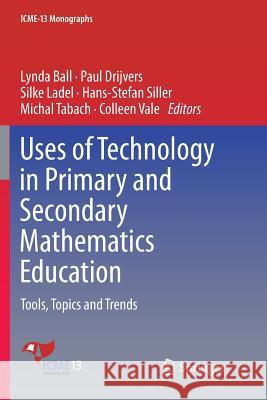Uses of Technology in Primary and Secondary Mathematics Education: Tools, Topics and Trends » książka
topmenu
Uses of Technology in Primary and Secondary Mathematics Education: Tools, Topics and Trends
ISBN-13: 9783030095253 / Angielski / Miękka / 2019 / 440 str.
Uses of Technology in Primary and Secondary Mathematics Education: Tools, Topics and Trends
ISBN-13: 9783030095253 / Angielski / Miękka / 2019 / 440 str.
cena 538,49 zł
(netto: 512,85 VAT: 5%)
Najniższa cena z 30 dni: 535,99 zł
(netto: 512,85 VAT: 5%)
Najniższa cena z 30 dni: 535,99 zł
Termin realizacji zamówienia:
ok. 20 dni roboczych.
ok. 20 dni roboczych.
Darmowa dostawa!
Kategorie:
Kategorie BISAC:
Wydawca:
Springer
Seria wydawnicza:
Język:
Angielski
ISBN-13:
9783030095253
Rok wydania:
2019
Wydanie:
Softcover Repri
Numer serii:
000812111
Ilość stron:
440
Waga:
0.62 kg
Wymiary:
23.39 x 15.6 x 2.31
Oprawa:
Miękka
Wolumenów:
01











